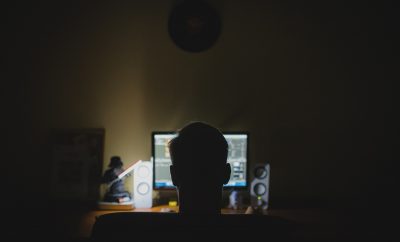
News
No End in Sight for Ukraine
Ukraine is a country in turmoil. There’s no other way around it. Protests have flared up in the nation’s capitol, and other cities in the northwest region of Ukraine. The movement is being called Euromaiden, and these protests are fiery, violent, and for at least five protesters at this point, deadly. The images coming out are powerful, moving, and frankly, horrifying. This one below is of a protester in Kiev with the fire that has been set by his compatriots to prevent government forces from breaching the barricade line. This is what’s happening in Ukraine right now.
So what’s going on? What we know is that the catalyst for the protests appears to be a decision made by Ukrainian President Viktor F. Yanukovych. For years, the Ukranian government has been attempting to move closer to the European Union. The proposed political and economic association pact would allow Ukrainian citizens to travel through the other EU nations without visas, leading to significantly more opportunities. The EU would gain an ally, and Ukraine would have to institute new laws as mandated by the EU. It truly seemed like a win-win by both sides.
But in November, Yanukovych backed out of the agreement. This was just the tip of the iceberg, because since then, things have gotten dramatically worse in Ukraine. The government has begun to pass laws that are being described by the protesters as draconian and dictatorial in nature. Protests have been outlawed, and protesters are being tracked. The government is using satellites to pinpoint the phone of everyone who visits the square in Kiev where dissenters are the thickest. Those numbers are being recorded, monitored, and being sent messages from the government condemning the actions of the phones’ owners. Other laws include but are no means limited to: participation in “mass disruptions” will incur 10-15 years imprisonment; it’s illegal to drive a car in a column more than 5 cars long; it’s illegal to set up a sound system without permission; setting up a tent is punishable by 15 days in prison; and the government can disable the internet at will.
This is not just a shallow protest based on the EU situation, but rather a grand debate about the future of Ukraine and the cultural ties that split the country in two. The Washington Post’s Max Fisher made an incredibly interesting infographic map that illustrates this perfectly.
This map shows the divide in Ukraine. The country is literally split in two. The northwest area is predominantly Ukrainian-speaking, has close ties to Europe, tends to have mostly Roman Catholics, and did not vote for Yanukovych. They are instead being led by a few main opposition leaders, Vladmir Klitschko, Arseniy Yatsenyuk and Oleg Tyagnybok. The southeast area is mostly Russian-speaking, is economically and culturally linked to Russia.
And that right there is the crux of this issue. Ukraine is a nation that’s facing an identity crisis. It’s pretty clear that Yanukovych caved on the EU deal because of the pressure from the Russians–Yanukovych has admitted that himself. After all, Russia has cut off gas exports and other important economic ties when Ukraine’s actions have moved outside of their interests.
This is a big international political issue for a lot of reasons. Obviously, Ukraine is not the only country to face severe protests, civil strife, and dictatorial policies this year and it would be disingenuous not to recognize that. But the reason that this situation, in particular, has caught my attention is because it is symbolic of a larger conflict. The Cold War is over but there’s still a fundamental struggle between Russia and Western Europe. There’s still a systemic distrust.
I majored in international affairs, specifically, security. That means that I have taken way too many classes on war, genocide, and civil conflict. And while, I can by no means call myself any sort of expert, I do have a background in the topic. The thing is, every theorist will tell you differently, but we don’t know why outbreaks like these happen. Theorists will weigh grievance vs. greed, identity issues, systemic issues, and external issues, such as the interplay between Europe and Russia. And the international affairs student in me wants to digest all of that, and give you a reason why this is happening. But I can’t. And that’s not just because this entire situation has yet to play out. It’s because I want to respect the protesters who are risking their lives in the name of something in which they believe so strongly. What happens in Ukraine has the potential to fundamentally transform Eastern Europe, and by extension, global politics. Again.
Editor’s Update:
Ukraine’s president accepted the resignation of his Prime Minister, Mykola Azarov, and cabinet of ministers, today, in concession to the opposition leaders and demonstrators who are currently protesting his rule. Additionally, parliament voted to scrap the laws previously mentioned above that have provoked the violent escalation in the country’s political crisis.
—
Anneliese Mahoney (@AMahoney8672) is Lead Editor at Law Street and a Connecticut transplant to Washington D.C. She has a Bachelor’s degree in International Affairs from the George Washington University, and a passion for law, politics, and social issues. Contact Anneliese at amahoney@LawStreetMedia.com.
Featured image courtesy of [Mstyslav Chernov via Wikipedia]








Comments